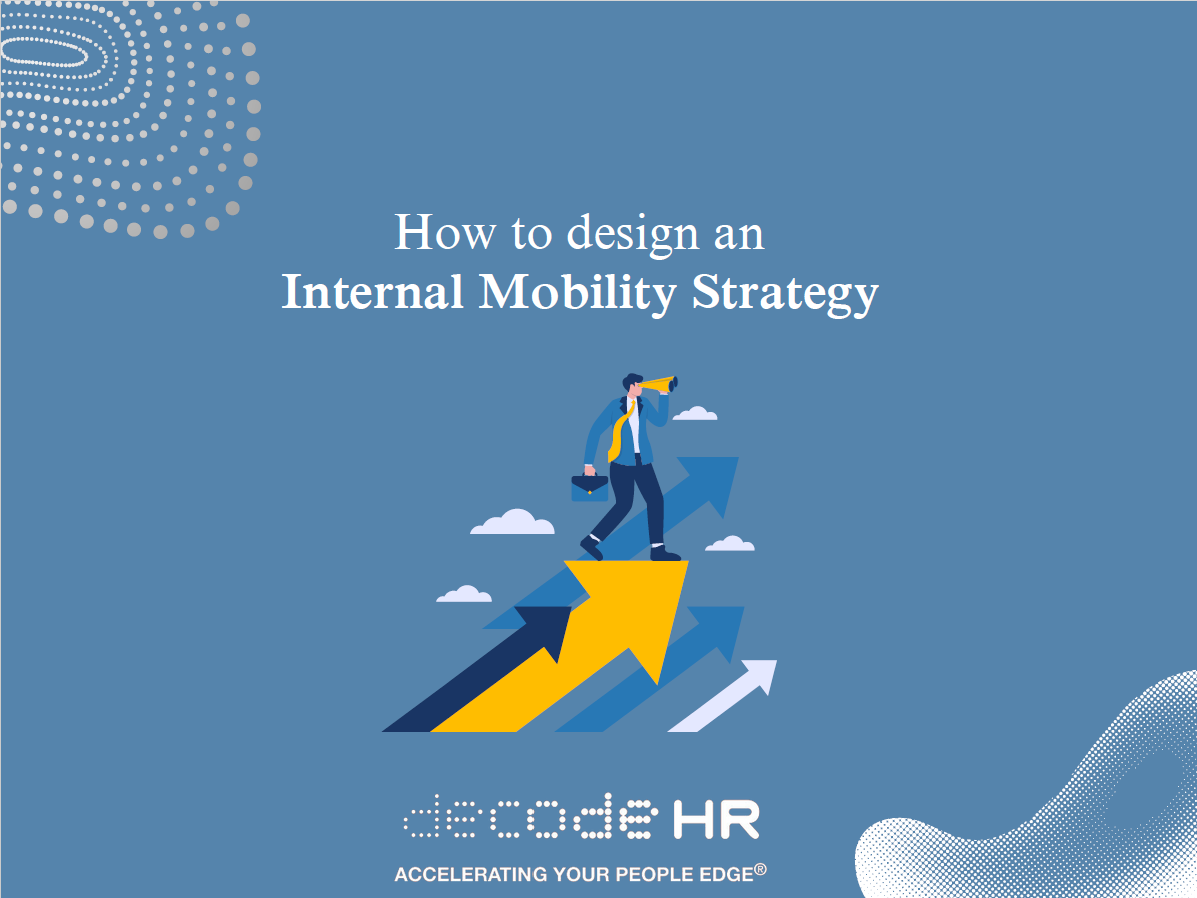Organizations everywhere are thinking differently about how people grow and move within their walls. This shift, a focus on an internal talent mobility strategy, is becoming a very important way for businesses to stay strong and keep their best people. It's about seeing the value in what you already have, you know, the skills and dreams of your own team members. When we talk about "internal," it's about things existing or happening inside a country or an organization, like the meaning of internal found in our own text, describing something within the limits or scope of what's already there. This way of thinking helps companies use their people in better ways, really.
For a very long time, when a new job opened up, the first thought might have been to look outside the company. But that can be a bit like forgetting about the treasures right at home, can't it? An internal talent mobility strategy changes this. It puts a spotlight on moving people around within the business, letting them take on new roles, different projects, or even shift to other departments. This approach, it actually helps people learn new things and build up their abilities right where they are, so to speak.
This idea of helping people move around inside the company, it's not just a nice thing to do; it makes good business sense, too. It can help keep your best people from looking elsewhere for chances to grow. It also means you might not have to spend so much money or time finding new people from outside. Plus, when people can move around, they often feel more connected to the company and more excited about their work. It's a way to build a stronger team from the inside out, really.
Table of Contents
- What is an Internal Talent Mobility Strategy?
- Why This Strategy Matters So Much
- How to Build a Good Internal Talent Mobility Plan
- Common Questions About Internal Talent Mobility
- Your Next Steps for Talent Flow
What is an Internal Talent Mobility Strategy?
An internal talent mobility strategy, in a way, is a thoughtful way for an organization to help its people move to different jobs or roles inside the same company. It's about seeing that a person who does one job might have skills that fit another job that opens up. This idea, it's very much about encouraging people to grow their careers without having to leave the place they already work. It can mean moving up, moving across to a different department, or even moving to a project that helps them learn new things.
Think about it like this: your company has a lot of different rooms, and each room has a different purpose. An internal talent mobility strategy is like having a clear map and pathways between those rooms. It's not just about moving people, though. It's also about making sure they get the right training and support to do well in their new spot. This approach, it really helps the company use all the abilities its people have, sometimes in ways that weren't obvious at first glance.
The meaning of "internal" here is quite important, you know. As our text explains, internal means existing or situated within the limits or surface of something. So, an internal talent mobility strategy is all about working with the people and resources already inside your organization. It's not about looking for outside hires first, but rather, it's about checking within your own walls to see who might be a good fit or who could be developed for a new role. This focus on what's already inside can bring a lot of good things, actually.
Why This Strategy Matters So Much
Having a good plan for moving talent around inside your company, it just makes a lot of sense these days. It helps with many common issues that businesses face. From keeping your best workers to saving money, there are many reasons why this kind of strategy is a very smart move. It's about building a company that can change and grow, even when things outside are always shifting, you know.
Keeping Your Best People
People who are good at what they do, they often want to keep learning and moving forward in their careers. If they don't see chances to do that where they are, they might start looking somewhere else. An internal talent mobility strategy gives them those chances right at home. It shows them that the company cares about their growth and wants them to stay. This can make a big difference in how long your best workers stick around, actually.
When someone feels like they can learn new things and take on different challenges without leaving, they are much more likely to be happy and committed. It's like offering them a clear path to their future, inside the company. This helps to build a loyal team, and loyal teams are often very productive. It's a way to keep that valuable knowledge and experience within your organization, which is pretty important, too.
Saving Money and Time
Finding new people from outside the company can be quite expensive and take a lot of time. You have to advertise the job, go through many applications, do interviews, and then train the new person. It's a whole process, you know. But when you move someone from inside, many of those costs go away. The person already knows the company culture and how things work.
This means less time spent getting them up to speed, and less money spent on recruitment agencies or job boards. It's a more efficient way to fill open spots. Plus, people who move internally often get productive faster because they're already familiar with the company's ways. So, in some respects, it's a very practical way to manage your resources.
Making Teams Stronger
When people move between different parts of the company, they gain a wider view of how the whole business works. They learn about other departments, their goals, and their challenges. This helps them understand the bigger picture, which is very helpful for everyone. It breaks down those invisible walls that sometimes exist between different teams, you know.
This broader understanding can lead to better teamwork and more creative ways to solve problems. People who have worked in different areas can connect ideas and people in new ways. It makes the whole organization more connected and, in a way, more intelligent as a whole. It's about building a network of people who understand many parts of the business, which is a really good thing.
Filling Skill Gaps from Within
Sometimes, a company needs new skills for new projects or new ways of working. Instead of always looking outside for these skills, an internal talent mobility strategy helps you find them inside. You can train your current employees to learn those new skills. This is called upskilling, and it's a very powerful tool.
It means you're investing in your own people, helping them grow their abilities to meet future needs. This not only fills skill gaps but also makes your workforce more adaptable. They become ready for whatever comes next, which is pretty important in a world that changes so fast. It's about making sure your team has the right tools for tomorrow's challenges, you know.
How to Build a Good Internal Talent Mobility Plan
Creating a plan for moving talent around inside your company takes some thought and effort. It's not something that just happens on its own. You need to put some clear steps in place to make it work well. It's about making sure everyone knows how it works and feels good about it, you know.
Know Your People's Skills
The first step is to really understand what skills your current employees have. This goes beyond just their job title. What are they good at? What do they like to do? What have they learned outside of their main job? You can use skill assessments or even just talk to people to find this out. This information is very important because it helps you see where people might fit in new roles, you know.
Having a clear picture of everyone's abilities helps you match them with opportunities that might not be obvious at first. It's like having a detailed map of all the talents within your company. This way, when a new need comes up, you can look at your internal "skill bank" first. It's a very practical way to start building your strategy, actually.
Make Paths Clear
People need to know how they can move around in the company. Are there specific career paths? Are there different types of roles they can try? This information should be easy to find and understand. You might even create a system where people can see open jobs internally before they are advertised outside. This shows them that internal movement is a real option, you know.
When the paths are clear, people feel more confident about exploring new roles. They don't have to guess or wonder how to make a move. This transparency, it really helps to encourage people to think about their future within the company. It's about making the process simple and inviting, so to speak.
Offer Ways to Learn
If someone wants to move to a new role, they might need to learn some new skills. Your company should offer ways for them to do this. This could be through online courses, workshops, mentoring programs, or even just working on a project that helps them gain new experience. It's about giving people the tools they need to grow, really.
When people see that the company is willing to invest in their learning, they feel more valued. This also makes them more likely to take on new challenges. It's like providing a stepping stone to their next role. This support for learning is a very important part of a good internal mobility strategy, you know. Learn more about employee growth opportunities on our site.
Support Managers and Leaders
Managers play a very big role in making internal talent mobility work. Sometimes, a manager might not want to lose a good person from their team. So, it's important to help managers understand the bigger picture benefits for the whole company. You can give them training on how to talk about career growth with their team members and how to support internal moves. This helps them see it as a good thing, you know.
It's also helpful to make sure managers have a way to easily backfill roles when someone moves. This takes away some of their worry. When managers are on board, the whole process works much more smoothly. They are key to helping people find their next step inside the company, actually.
Use Technology to Help
There are many tools and systems that can help with an internal talent mobility strategy. These could be platforms where employees can list their skills, look for open jobs, or find mentors. Technology can make it much easier to connect people with the right opportunities. It can also help HR teams track who is moving where and what skills are available. This makes the whole process more organized, you know.
Using the right technology can really speed things up and make it easier for everyone involved. It helps to make sure that opportunities don't get missed and that people can find what they are looking for. It's a way to make the strategy more efficient and accessible for everyone, which is pretty good, too. You can also learn about upskilling internal workforce on this page.
For more insights on how other organizations are handling internal talent movement, you might look at resources from a reputable HR resource site, as they often share case studies and best practices.
Common Questions About Internal Talent Mobility
People often have some questions when they first hear about an internal talent mobility strategy. Here are a few common ones, with some simple answers, you know.
What is internal talent mobility?
Internal talent mobility is basically when a company helps its own employees move to different jobs or roles within the same organization. It's about giving people chances to grow their careers without having to leave the company. This can mean moving up, moving to a different department, or even just taking on a new project that helps them learn new things. It's all about using the talent you already have inside, you know.
Why is internal talent mobility important for organizations?
This kind of strategy is very important for a few big reasons. It helps companies keep their best people because it gives them chances to grow. It also saves money and time because you don't have to hire as many people from outside. Plus, it makes teams stronger by helping people understand more parts of the business, and it helps fill skill gaps by training current employees. So, it's a very smart way to manage your people and your business, actually.
How can companies encourage internal movement?
To encourage people to move around inside the company, you need to do a few things. First, really know what skills your people have. Then, make sure the paths for moving are very clear, so people know what's possible. Offer ways for them to learn new skills they might need. Also, support your managers so they are happy to see their team members grow into new roles. Using technology to make the process easy also helps a lot. It's about creating a culture where internal growth is seen as a good thing, you know.
Your Next Steps for Talent Flow
Thinking about an internal talent mobility strategy for your own organization is a very positive step. It means you're looking at how to make your company stronger from the inside. It's about valuing the people who are already with you and giving them chances to do more, to learn more, and to contribute in new ways. This approach, it can really change how your business grows and how your people feel about their work, you know.
Starting small might be a good idea. Perhaps pick one department or one type of role to focus on first. See how it goes, learn from it, and then expand. The goal is to create a system where moving within the company feels natural and beneficial for everyone. It's about building a place where people can truly grow their careers right where they are, which is a pretty wonderful thing, actually.



